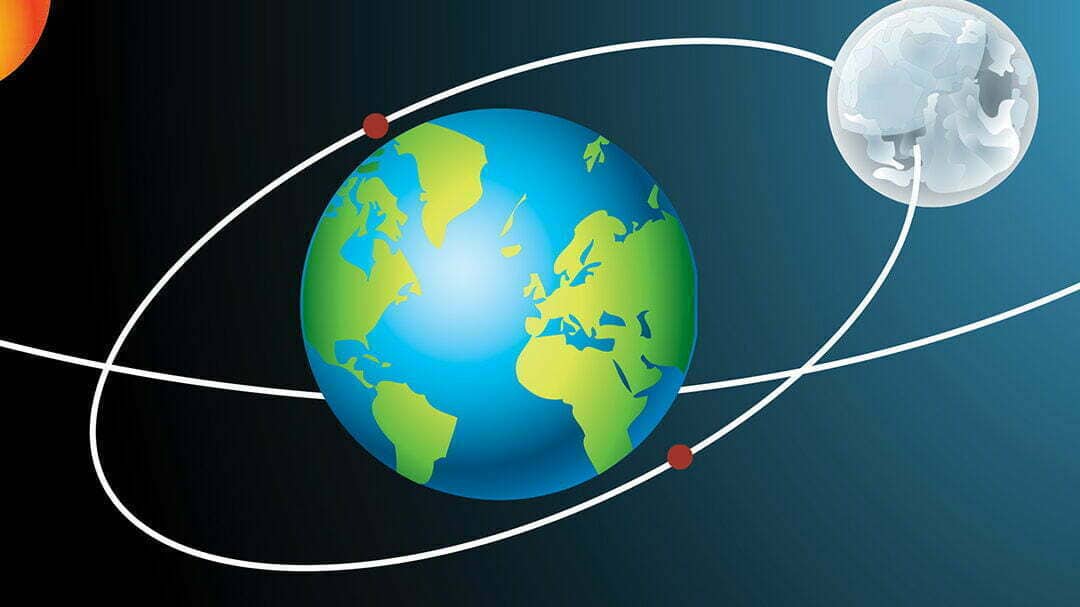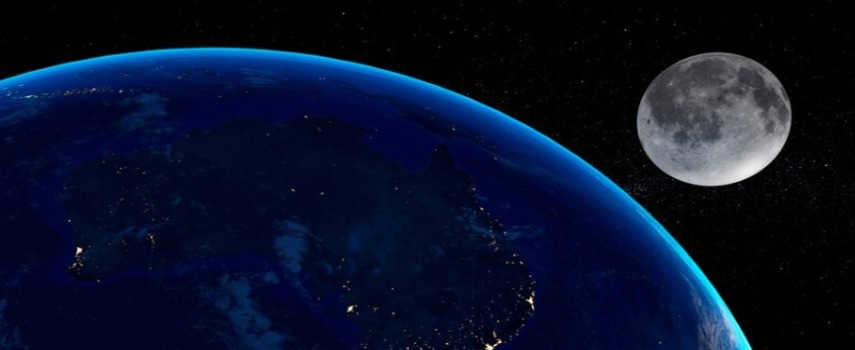
Throughout history, individuals fascinated by outer space have been captivated by the moon. This celestial body, with its gray hue, has been estimated to be approximately 4.6 billion years old, equivalent to the age of our planet.
Given the close proximity of these two entities, combined with the moon’s prominent appearance in the sky, it has become an ideal subject for observation and research. Scientists were initially faced with the task of determining the moon’s orbital path, a question that needed to be answered.
The idea
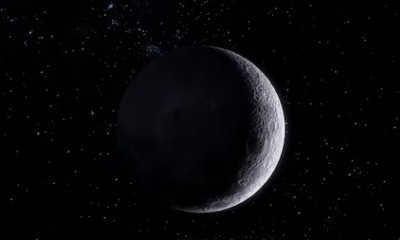
The Moon’s path around the Earth follows the shape of an elliptical circle. The major axis measures 384,400 kilometers in length, while the minor axis is slightly smaller at 383,800 km.
These small but noticeable differences clearly indicate that the Moon’s orbit, although close to a perfect circle, deviates slightly from it.
Our planet and the Moon together form a satellite system, with both bodies revolving around a common barycenter located 4,670 km away from the Earth’s center.
When it comes to astronomy, the movement of the Moon is typically calculated in relation to both the fixed stars and the Sun. If we are referring to a complete revolution around the Earth in relation to the stars, it is called a sideric month. However, if we use the Sun as a reference point, it is known as a synodic month.
The duration of a complete revolution of the moon is:
These numerical values allow us to determine that the satellite’s revolutions are synchronized with the rotation of our planet. As a result, despite the constant movement of both objects, the same side of the Moon is always visible from Earth. Within a single day, the lunar disk shifts by approximately 13.2°. According to the rules of the ecliptic, the Sun and the Moon move in the same direction.
The Moon’s rotation around the Earth has an average speed of 3700 km/h. This means that in just one hour, the lunar disk travels a distance that is comparable to its own diameter.
The movement of this celestial body is responsible for the lunar cycle, which includes events such as the full moon, new moon, and incomplete moon. These visual changes in the Moon are caused by variations in the amount of light it receives, which in turn depend on the positions of the Moon and the Sun relative to each other.
However, perhaps the most awe-inspiring phenomenon associated with the Moon is a solar eclipse. This extraordinary event only occurs during the new moon phase, when the Moon’s orbit brings it directly between the Earth and the Sun, completely blocking the Sun’s visibility from the Earth’s surface.
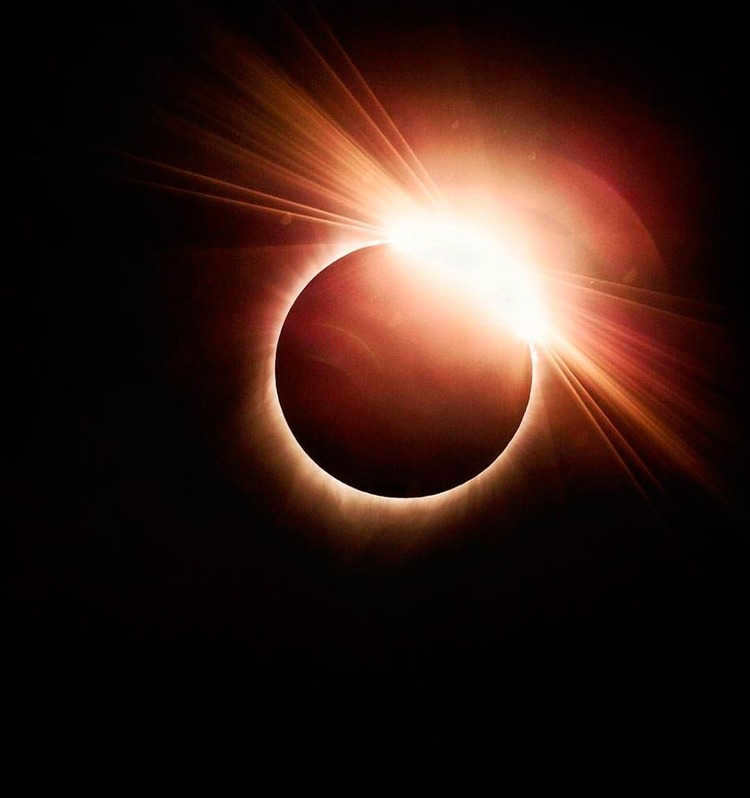
This phenomenon occurs as a result of the Moon’s proximity to Earth. Despite the fact that the Moon’s diameter is 400 times smaller than that of the Sun, their sizes appear to be the same due to the difference in distance.
The average distance between the Moon and Earth is 385,000 kilometers. It’s as if there were 72 additional celestial bodies the size of Earth between our planet and the Moon. However, this distance varies due to several factors:
The fluctuations in these numbers can be attributed to several factors:
The first factor is the elliptical orbit of the Moon, which means that the distance from its center will vary depending on the point along the radius. The second factor is related to centrifugal force. While the gravitational pull
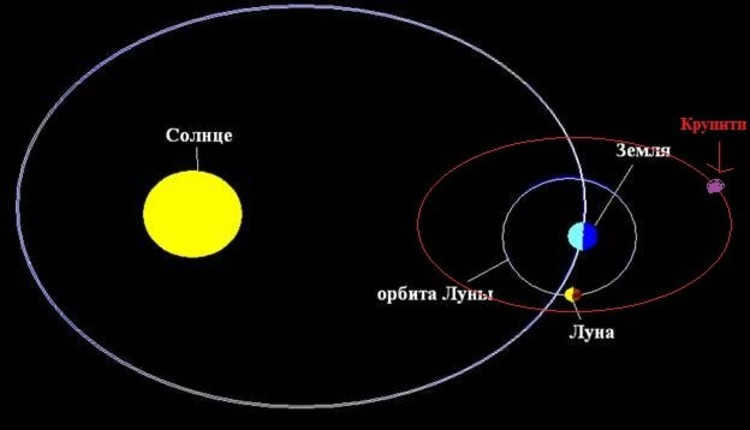
While the gravitational force of the Earth prevents the Moon from escaping its orbit, it is continuously moving further away from our planet. The rate of this movement is approximately 5 centimeters per year. The Earth’s tides also play a role in influencing this process.
The average eccentricity of the Moon’s orbit is 0.0549. This value indicates that the Moon does not follow a perfectly circular path, despite how it may appear in diagrams or to the naked eye.
The average inclination of the Moon’s orbit to the ecliptic is 5.155°. Additionally, the average inclination of the lunar equator to the ecliptic is 1.5°.
Lunar orbital precession
The phenomenon of orbital precession occurs when the motion of the axis of a celestial body is altered by external factors. The Moon experiences two simultaneous procedural motions:
These motions occur in different directions. The first precession causes a shift in the axis towards the east, while the second precession causes a shift towards the west. These shifts are a result of magnetic disturbances on the Sun and the gravitational influence of the Earth. In addition to its astronomical implications, this phenomenon also has an impact on human life:
- Changes in time measurements. As the lunar orbit gradually changes due to precession, the positions of stars in the sky can appear to shift.
The Definition of a Circumlunar Orbit
A circumlunar orbit, also known as a lunar orbit, is an orbital path around the moon. It is a trajectory that allows a spacecraft to orbit the moon without landing on its surface. This type of orbit is commonly used for various scientific missions and exploration purposes.
The Purpose of a Circumlunar Orbit
A circumlunar orbit is often used for scientific research, observation, and exploration of the moon. It provides a unique vantage point for studying the lunar surface, its geology, and its atmosphere. Additionally, circumlunar orbits can serve as a staging point for future missions to other celestial bodies, such as Mars or asteroids.
The Challenges of a Circumlunar Orbit
While circumlunar orbits offer many advantages, they also present several challenges. The main challenge is the precise navigation and control required to maintain a stable orbit around the moon. The gravitational forces of the moon, as well as the varying terrain and gravitational anomalies, can make it difficult to maintain a consistent trajectory. Additionally, the lack of a lunar atmosphere makes it necessary to rely on onboard propulsion systems for orbit adjustments.
Missions and Achievements in Circumlunar Orbits
Several missions have successfully reached circumlunar orbits. One notable example is the Apollo program, which sent astronauts to orbit the moon and return safely to Earth. The Apollo missions provided valuable data and insights about the moon’s geology, surface conditions, and potential for future human exploration. In recent years, private space companies have also expressed interest in circumlunar missions, aiming to send tourists and conduct further scientific research.
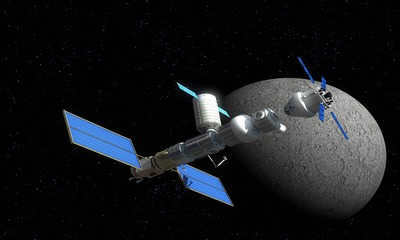
Every large celestial object has one or more satellites in close proximity.
The moon, despite being the moon itself, also has smaller celestial bodies orbiting around it. These bodies’ trajectory of motion is known as a circumlunar orbit. It is important to note that the moon itself does not follow a circumlunar orbit, but rather a lunar orbit.
There can exist multiple circumlunar orbits, although they tend to be unstable due to the influence of the Sun and Earth’s gravitational forces, which significantly impact the rotation of objects around the moon.
Consequently, the natural lunar satellite will eventually deviate from its original orbit. In such cases, it will either collide with the moon’s surface or wander off into outer space.
The Soviet Luna-1 was the first spacecraft to be launched for the purpose of exploring the lunar surface, but it was unsuccessful in reaching a near-lunar orbit.
It is in the near-lunar orbit that humans launch spacecraft from. Therefore, in 1959, Luna-3 became the first device to successfully enter lunar orbit. The first manned spacecraft, Apollo 8, was launched by the Americans in 1968.
Mankind’s desire to explore the lunar surfaces has not diminished even today. As a result, NASA plans to land on the Moon again in 2024, using the near-lunar orbit as the starting point for this mission.
Summary
The movement of the Moon in its orbit has a significant impact on both nearby celestial bodies and human life. Here are the key points:
- The Moon’s path around Earth is not a perfect circle, but rather an ellipse.
- A complete lunar cycle corresponds to one revolution of the Moon around Earth.
- The precession of the Moon’s orbit affects the behavior of the oceans and the accuracy of timekeeping.
- Both the Moon and the Sun move in the same direction, although the Moon is much closer to Earth than the Sun.
- The Moon is gradually moving away from Earth over time.
The last point may sound concerning, but in reality, it is unlikely to have significant consequences for the next several generations or even centuries of Earth’s inhabitants.
Instead, we are discussing thousands of years, over which time the Moon will gradually descend in orbit by a few centimeters annually. Eventually, the Moon could potentially enter outer space. However, it is uncertain if there will be any remaining inhabitants on Earth who will be able to witness this occurrence.
When viewed from Earth, only one side of the Moon is visible at all times. This may lead an observer to question whether the Moon actually rotates on its axis.
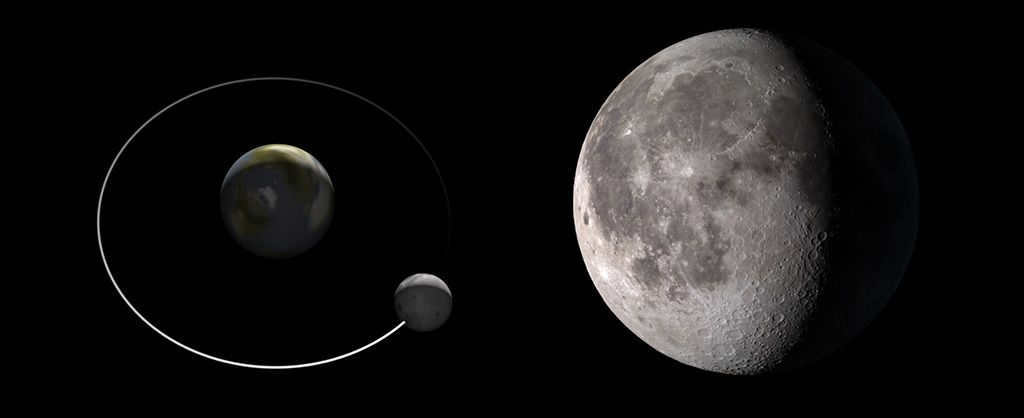
According to certain scientists, the Moon is a component of the Earth that has been separated due to centrifugal forces. This theory is supported by NASA.
Distinctive Features of the Moon
When comparing the characteristics of all the satellites in the Solar System with the planets they orbit, the Moon stands out as a record holder. Its diameter is approximately 25% of Earth’s and its mass is just 1/100th of Earth’s mass. However, in terms of absolute size, there are other satellites in the Solar System that are much larger than the Moon.
The prevailing theory regarding the origin of the Earth’s natural satellite suggests that it was formed as a result of a collision between two protoplanets of different sizes. This collision caused the heavier and denser cores of the cosmic bodies to merge, while the upper layers of soil from both protoplanets formed the natural satellite.
This formation mechanism explains the higher iron content in terrestrial rocks and the prevalence of rocky materials in the composition of lunar soil.
The Moon follows an elliptical orbit around the Earth. The eccentricity of its orbit (a measure of how much it deviates from a perfect circle) is 0.0549. The average radius of the Moon is 1737.1 km, and it moves at a speed of 1.023 km/s.
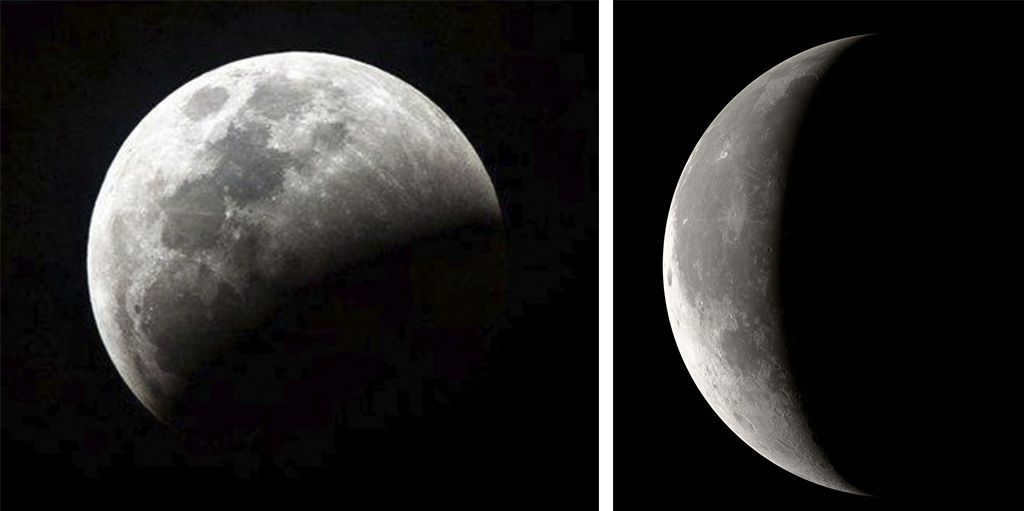
Stages of Lunar Illumination
The illumination of the Moon refers to the portion of the Moon’s surface that is visible from Earth and lit by the Sun. The various phases of the Moon occur as a result of the relative positions of the Sun, Earth, and Moon. Different parts of the Moon’s surface are illuminated by sunlight at different times as observed from Earth.
Throughout the synodic month, the phases of the Moon transition sequentially from the new moon, when the front side of the lunar surface is 0% illuminated, to the full moon, when the entire front side is 100% illuminated.
Astronomers recognize four primary phases of the Moon:
Each phase lasts approximately 7.4 days, although this duration is not fixed and can vary due to the elliptical shape of the Moon’s orbit.
Satellite’s Rotational Movement
Similar to any other satellite, the Moon undergoes rotation around its host planet. Additionally, as it orbits the Earth, it also orbits the Sun. The Moon’s axial rotation, as observed from Earth, is not easily perceived. As a result, one may mistakenly believe that the Moon remains stationary while the Earth revolves around it.
However, if the observer’s vantage point extends beyond Earth, it becomes evident that the Moon not only moves in relation to the planet but also rotates on its axis.
The Earth’s satellite undergoes a complete revolution in the same amount of time it takes for it to travel along its orbit, resulting in a daily rotation around its axis.
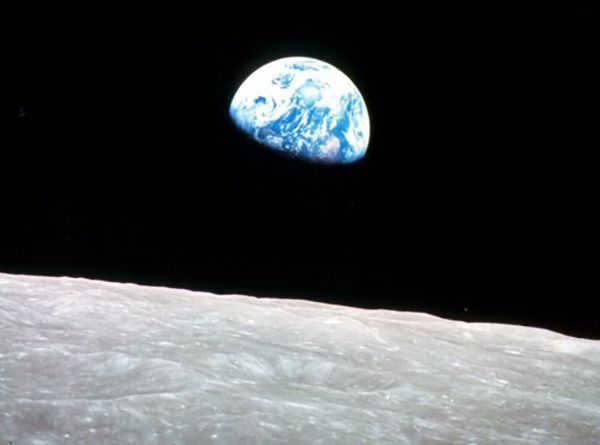
A similar pattern is observed in the satellites of other planets: Charon, which orbits the planet Pluto, also always faces the same side towards its planet. The same can be said for the moons of Mars – Deimos and Phobos.
In scientific circles, this phenomenon is referred to as synchronous rotation or tidal capture.
This rotation pattern means that when observing the satellite from the main celestial body, the same half of it is always visible. From the surface of the satellite itself, the parent celestial body appears to be fixed in the sky. From the opposite side of such a satellite, the “parent” celestial body is never visible.
Scientists link the phenomenon of tidal capture with the Moon’s rotation and its impact on the Earth’s climate. Specifically, they describe how there are more atmospheric masses in the hemisphere of the planet that faces the Moon during this period.
This leads to an increase in atmospheric pressure in that hemisphere and subsequent changes in weather conditions. Climatologists hypothesize that these “air tides” also affect the intensity of precipitation.
However, a closer look at the data on atmospheric precipitation over the past 15 years revealed that the influence of lunar gravity on the atmosphere is not as significant as previously believed by scientists.
Sideric month versus synodic month
The sideric month refers to the period of time it takes for the Moon to return to its original position relative to the stars after completing one revolution in its orbit. This duration is not fixed due to variations in lunar motion caused by the elliptical shape of the Moon’s orbit.
The length of the sideric month can differ by a few hours. On average, it takes the Moon approximately 27.322 Earth days to complete one revolution around the Earth.
On the other hand, the synodic month represents the time between two consecutive phases of the Moon, such as from one full moon to the next. Similar to the sideric month, the duration of the synodic month is not constant. The average length of this period is about 29.5 Earth days.
The Moon, the Earth, and the Sun are the three primary celestial entities that contribute to the survival of humanity. The Moon plays a crucial role in maintaining the stability of our planet’s rotation and influencing the tides. The Earth, being our home, provides us with everything we need for sustenance and shelter. Lastly, the Sun radiates an abundant amount of heat and light, which are essential for our existence.
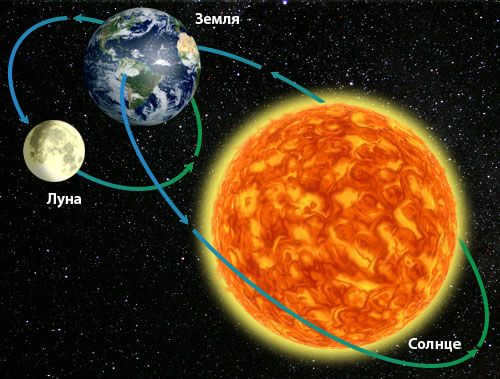

The reason why we are able to observe the Moon in our sky is due to its ability to reflect sunlight. Whenever the Earth aligns itself between the Sun and the Moon, the lunar surface is no longer illuminated by sunlight. This phenomenon is known as a lunar eclipse. This information is credited to store.temocenter.ru.
Dimensions of the Sun and Moon
To comprehend the nature of solar eclipses, it is imperative to be aware of the relative sizes of the Moon and the Sun. The central star of our solar system has a diameter of 1.4 million km, while the Earth’s satellite has a similar measurement of nearly 3.5 thousand km, making the difference approximately 400 times.
Furthermore, the Moon is closer to the Earth by a factor of about 400 (when these celestial bodies are positioned at certain points in relation to the planet): at a distance of approximately 385 thousand km, whereas the distance from us to the center of the solar system is 150 million km.
Despite the fact that the Sun is significantly farther from us than the Moon, they often appear to be of similar size in the sky when observed from Earth.
This phenomenon provides an explanation for solar eclipses: the Moon fully or partially obscures the Sun.
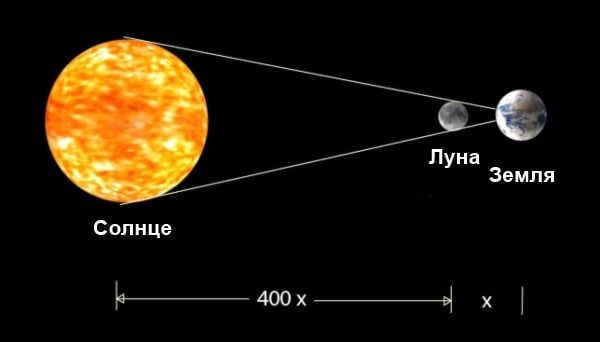
Transformation of Moon Phases
As the Sun, Earth, and Moon change their positions relative to each other, the illuminated portion of our satellite appears differently.
The different illuminated parts are known as lunar phases, which include:
There are also two additional phases: the waxing (young) moon and the waning (aging) moon.
During a new moon, the Moon is not visible to observers on Earth because it is positioned between the planet and the Sun. The dark side of the Moon, which is not illuminated by the Sun, faces the planet. However, a faint glow can still be observed on the lunar disk during this period. This glow has a distinct ash color, resulting from sunlight reflected from the Earth.
The waxing moon, also known as neomenia, appears in the sky two days after the new moon. It takes on the shape of a narrow sickle and gradually increases in size over the course of seven days, eventually forming a semicircle. This phase of the moon can be seen shortly after sunset in the western or southwestern sky.
During this phase, the moon is positioned 90 degrees to the east relative to the sun. It is visible only in the evening and during the first half of the night.
Two weeks after the start of the lunar cycle, the full moon phase occurs. The moon is in opposition to the sun, with its illuminated side facing the Earth. It rises at sunset, remains visible throughout the night, and sets at dawn.
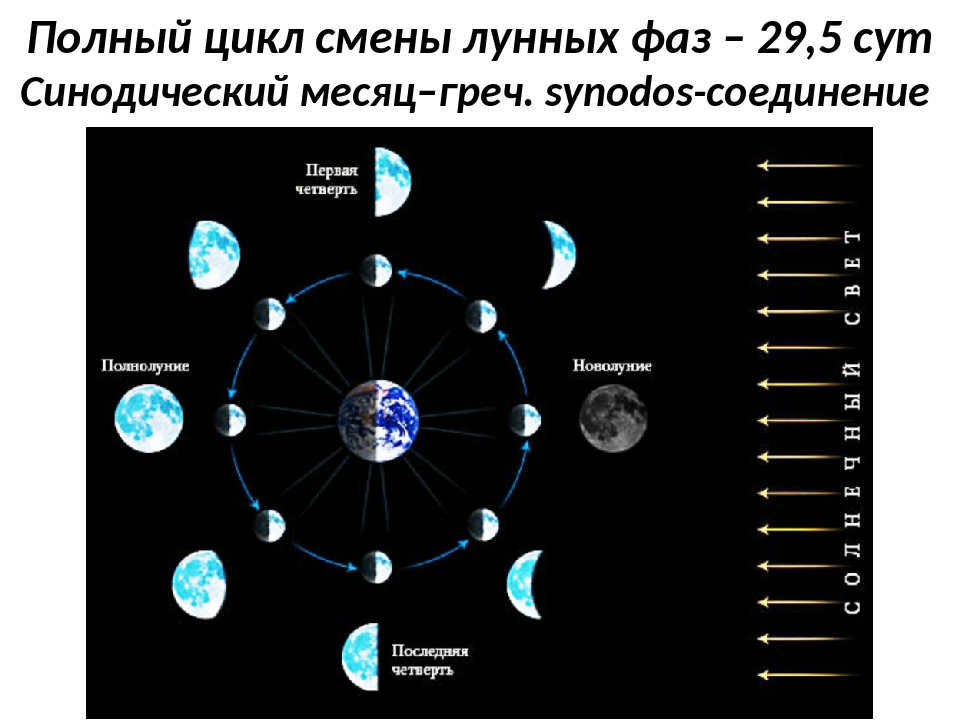
Following another week, the final quarter phase commences: the celestial body takes on the form of a half-circle visible in the eastern region of the sky during the latter half of the night and prior to sunrise.
Its size will gradually diminish and in the last few days will assume the shape of a slender letter “C”.
All the aforementioned holds true for observations made from the Earth’s northern hemisphere. In the southern hemisphere, the orientations of the crescent and the half-circle are reversed: the letter “C” does not resemble a waning moon, but rather a waxing moon.
A completely unique perspective of the satellite in various stages is observed at the equator, where the orientation of its illuminated portion is not vertical, but horizontal. As an illustration, the aging moon takes on the appearance of a slender vessel positioned in the lower half of its disk.
In calculations, the duration of each of the 4 primary lunar phases is approximated as 7.38 Earth days, however, their actual length is subject to slight fluctuations due to the satellite’s orbit elongation and its orbital velocity variability.
Due to the lunar month’s shorter length compared to the majority of Earth months (29.5 days rather than 30 or 31), a second full moon may occur once a year within a calendar month. This occurrence has been dubbed the “Blue Moon”.
This term does not arise from a modification in the shade of the Moon, but rather from the source of the English expression “Once in a blue moon,” which can be understood as “On the rarest of occasions,” meaning almost never. Although satellites with a blue hue can exist, this occurrence is exceptionally infrequent and can be attributed to an optical illusion.
The Moon undergoes three types of movements:
- It rotates around its axis, completing one full revolution in approximately 27.3 Earth days.
- It orbits around our planet in an elliptical trajectory, with the same period of 27.3 days.
- It also orbits around the Sun, following an Earth-Moon orbit.
The reason why the Moon always appears to be facing us on one side is due to the equal duration of its own rotation and its revolution around the Earth.
On the other hand, the Earth experiences two types of motion: rotation around its axis and revolution around the Sun. The rotation occurs from west to east, contributing to the changing time of day. The illuminated hemisphere of the Earth experiences daylight, while the opposite hemisphere experiences nighttime.
Each revolution of the Earth around its axis is known as a day, and it has a duration of approximately 23 hours 56 minutes and a few seconds. However, for the sake of calculations, this period is considered to be equal to 24 hours.
The planet rotates around the Sun in an elliptical orbit, with an average distance of approximately 149.6 million km from the central star. Its orbital velocity is around 29.8 km/s on average. During perihelion (the point closest to the Sun), the Earth moves at a faster speed of over 30 km/s, while in aphelion (the farthest position), it moves at a slower speed of less than 29.3 km/s.
Throughout one complete orbit around the Sun, the planet completes 365.25 rotations, representing the length of 1 astronomical year. The calendar, on the other hand, consists of 365 days, with each day consisting of 24 hours. However, every 3 years, an extra day is added to the calendar, known as a leap year, making it a total of 366 days.
The position of the Sun relative to the Earth remains fixed, but it is not completely motionless as it rotates around the center of the galaxy. It takes approximately 220-230 million years for the Sun to complete one full revolution.
Throughout its existence, the Sun has completed only 20 full rotations around the Milky Way.
Scientists predict that our star will continue its journey for another 7 billion years, during which it will complete approximately 30 more revolutions.
The Sun’s linear velocity in space is estimated to be around 200-220 km/s. The path it follows is known as the apex and it moves in the direction of the Hercules constellation.
Furthermore, scientists have discovered that in addition to its own rotation, the celestial body also undergoes a rotational movement. This phenomenon has been observed by studying the shifting positions of spots on its surface. Unlike a rigid object, the rotation of the luminary varies depending on its location: it spins faster at the equator and slows down towards the poles. However, this rotational behavior only applies to the surface and the surrounding mass.
On the other hand, the inner layers and the core of the sun exhibit a more traditional solid rotation. This is similar to the rotational patterns observed in gas giants like Saturn and Jupiter. The sun completes one full revolution around its axis in a span of 25.4 Earth days. It’s worth noting that the sun’s axis is not vertical, but rather tilted at an angle of 7 degrees.
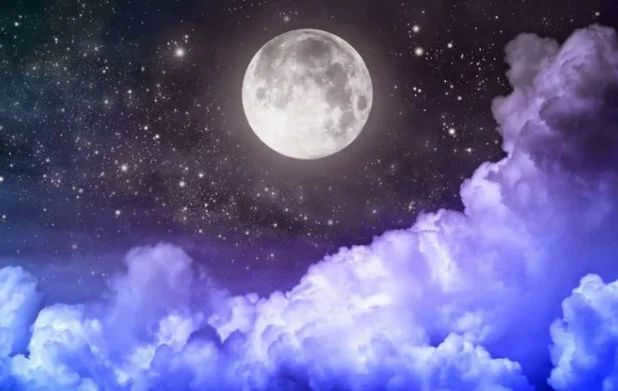
The Moon is a celestial body that is visible in the sky to all inhabitants of our planet. It is acknowledged as Earth’s solitary natural satellite. Similar to the Sun, the Moon influences the climatic characteristics of our world. The lunar calendar is established on the orbit of the satellite around our planet, which was utilized in ancient epochs.

In today’s fast-paced society, simply relying on the traditional school curriculum is no longer sufficient. It is crucial to gain valuable knowledge in finance and investments to secure your financial well-being.
Start building a solid foundation for your future by acquiring an extensive understanding and skills in financial literacy. Access our online FINANCIAL LITERACY course today.

Enroll now, APPLY FOR YOUR SUCCESS
Sidereal and Synodic Months
The time it takes for the Moon to orbit the Earth with respect to the fixed stars is known as the sideric month. It lasts for 27.32 days. In one day, the Moon moves by 13.20. The Moon and the Sun both move in the same direction along the ecliptic. In a sideric month, the Sun will move along the ecliptic by approximately 27.0, and it will take an additional 2.21 days for the Moon to return to its original position relative to the Sun. The period during which the Moon orbits the Earth with respect to the Sun is known as the synodic month in astronomy. Unlike the sideric month, the synodic month is slightly longer and lasts for 29.53 days.
The Moon’s appearance is directly influenced by the relative positions of the Sun and the Moon. This is why we refer to the synodic month as a “month”. The synodic month begins when the lunar disc is positioned between the Earth and the Sun, with its Earth-facing side hidden from view. At this stage, the backside of our planet’s satellite is illuminated.
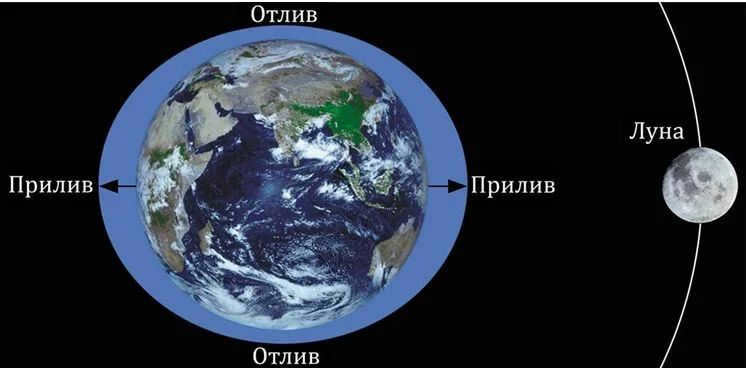
Source
The motion of a massive body of water, created by the tides, not only causes a deceleration in the rotation of the Earth, but also results in the Moon being pushed away from the Earth and accelerated. Each year, the Moon moves approximately 38 mm further away from the planet. This is due to the tidal acceleration causing the lunar orbit to resemble a slowly unwinding spiral.
It is also worth noting that observers on Earth are able to see approximately 55% of the Moon’s total surface area. This is because of the elliptical shape of the Moon’s orbit and a slight tilt in the lunar rotation axis in relation to the orbital plane.
Change in Lunar Phases
When observing the Moon, one can see how its appearance changes over time. This phenomenon is known as the change in lunar phases. From an astronomical perspective, the lunar phase refers to the portion of the Moon that is illuminated by the Sun and visible from the Earth’s surface at a specific moment. The Moon itself does not emit light but rather reflects sunlight. The alignment of the Sun, Earth, and Moon determines the appearance of the Moon. There are traditionally four phases of the Moon:
- New Moon – during this phase, the lunar disk is positioned between the Sun and the Earth. The side of the Moon that does not receive sunlight is facing the Earth, making it invisible in the sky.
- During the first quarter, only half of the illuminated portion of the Moon is visible. In the Northern Hemisphere, this would appear as the right side of the Moon.
- When it’s a Full Moon, the entire side of the Moon that is lit up by the Sun is facing the Earth, giving the observer a view of the entire disk.
- During the last quarter, once again only half of the illuminated disk is visible, but this time it will be the left side.
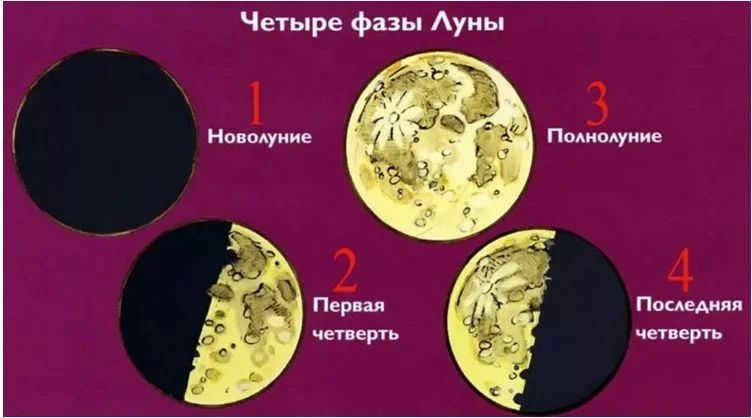
Source
During the synodic month, known as the lunar month, the phases of the moon go through a cycle. This cycle has a precise duration of 29.53 days. The phase period encompasses the time during which all the lunar phases occur. Each major phase lasts approximately seven days, providing a way to determine the age of the Moon:
- On the 0th or 30th day, the lunar disk is not visible;
- After 7 days, the first quarter appears, and it is best observed in the evening;
- At 15 days, the full moon occurs, with the lunar disk visible throughout the night;
- After 22 days, the last quarter appears, and it is best observed closer to morning.
At approximately 19:00 in the first quarter, the Moon will be positioned towards the southern region, and it will shift towards the west by 1:00 a.m. During the full moon phase at 19:00, it will emerge in the eastern direction, and by 1 a.m., it will have shifted towards the southern direction, eventually reaching the western region by 7 a.m. In the last quarter, at 1 a.m., the Moon will be visible in the eastern direction, and as early as 7 a.m., it will be oriented towards the south. By having knowledge of at least one side of the world, one can always determine the other directions.
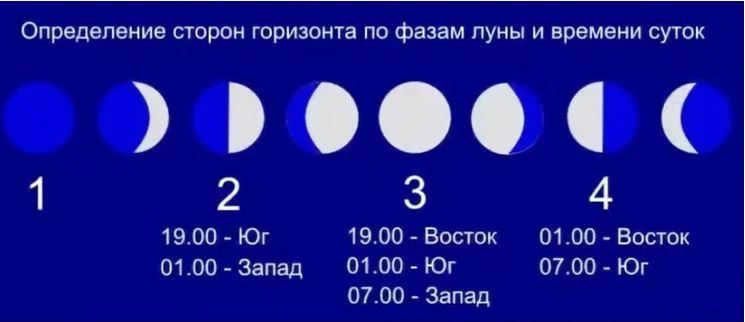

Source
Lunar rotation
Humans can witness lunar rotations only during a new moon phase, where the moon’s disk must be positioned between the Sun and Earth.
It is a known fact that the Earth completes one rotation around its axis in a 24-hour period and simultaneously orbits around the Sun. It takes approximately 365 days (1 year) for the Earth to complete a full orbit around the Sun. During this time, the Moon is also in motion and revolves around the Earth, requiring approximately 29.5 days to complete a full revolution.
The relative positions of celestial objects in the Earth-Moon-Sun system are in constant flux. As the Moon orbits the Earth, there are specific moments when it aligns itself between the Sun and the Earth. Due to the Moon’s dark and opaque nature, it is capable of acting as a massive shield, effectively blocking out the Sun and causing an eclipse.
The Sun is situated approximately 150,000,000 kilometers from our planet, while the Moon is at a distance of 384,000 kilometers. It is a well-known fact that objects appear larger when they are closer. When comparing the Moon and the Sun, we can see that the Moon is approximately 400 times closer to Earth. Additionally, the solar diameter is also 400 times greater than the lunar diameter. Due to these proportions, the Moon is capable of completely blocking out the Sun during a solar eclipse, as their apparent sizes are virtually identical. Astronomers distinguish between various types of solar eclipses, including total, partial, and annular.
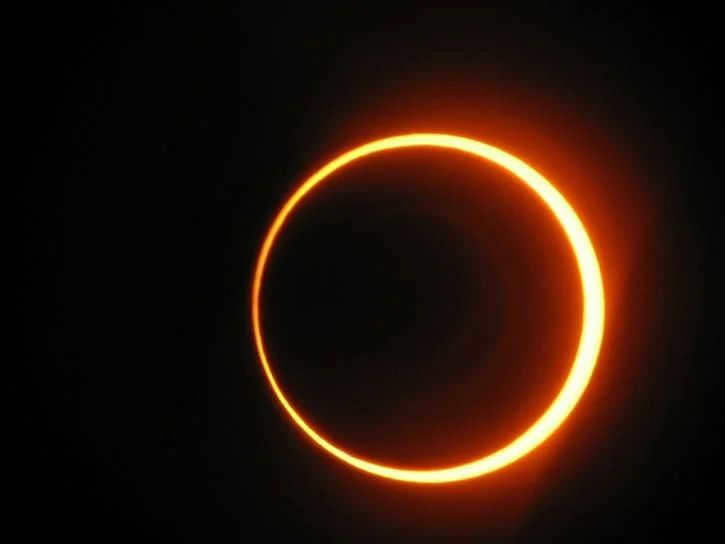
Within a span of one year, the Moon undergoes the new moon phase a total of 12 times. Given this information, one would expect solar eclipses to occur on a monthly basis. However, this is not the case. If all celestial bodies were to move in a single plane, the Earth’s satellite would consistently align directly between the Earth and the Sun during each new moon. As a result, eclipses would occur regularly and be visible to the human eye. Nevertheless, within the Solar System, both the Earth and the Moon rotate in separate planes that do not intersect. Consequently, during most new moons, the Earth’s satellite is positioned either above or below the Sun, preventing the occurrence of eclipses.
The trajectory of the Moon’s disk as it moves across the sky is distinct from that of the Sun. In the vast expanse of space, there exist two specific points where the Moon’s orbit intersects with the ecliptic. These points, known as the lunar orbital nodes (south and north), bring the paths of celestial bodies closest to each other. As a result, if the Moon reaches the phase of the new moon near these nodes, observers on Earth will experience an eclipse.
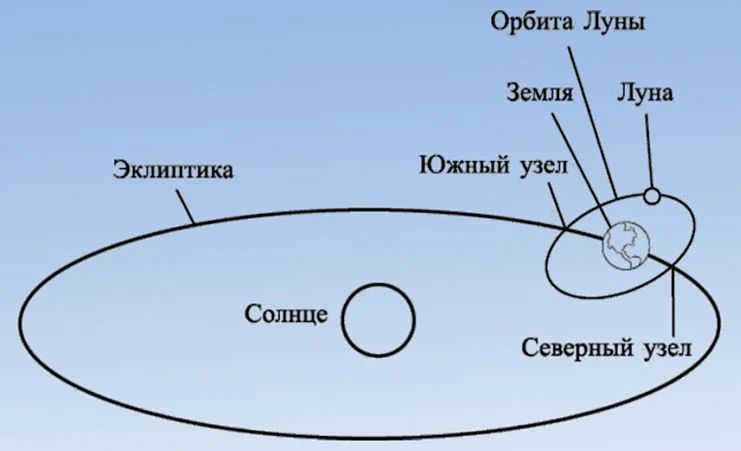
Source
In the event that the celestial body and the Earth’s satellite are in close proximity to the nodal point, a total or annular solar eclipse will take place. Conversely, if the celestial objects are slightly displaced from these points, the observer will witness a partial (partial) solar eclipse. As the Earth’s satellite traverses the sky from west to east, the star always commences its approach from the western (right) side.
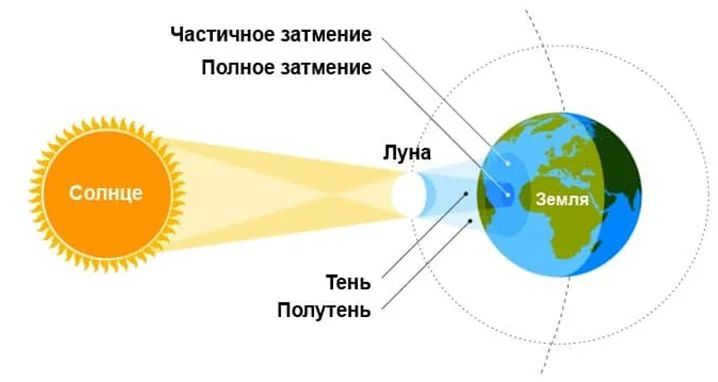

Source
Phenomenon of the lunar eclipse
This natural event is directly influenced by the movement of the Moon around the Earth. It is the characteristics of this movement that result in complete or partial lunar eclipses.
You can observe them when the moon is in the full moon phase. The Moon-Earth-Sun system is aligned in a straight line. The Earth is in the center, with the Sun and Moon on either side.
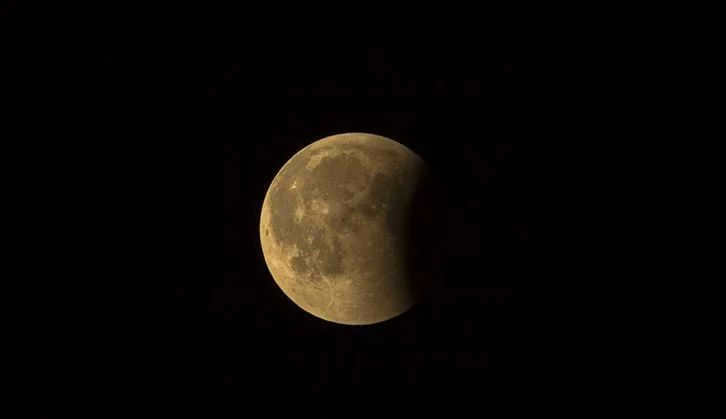
Typically, instead of witnessing a total eclipse, an observer typically sees a partial (penumbral) eclipse of the Moon. The lunar disk is only partially obscured because it doesn’t fall completely into the Earth’s shadow. This phenomenon can be observed from the entire hemisphere of the planet that is facing the Sun at that moment.
Since celestial bodies move in different planes and only align in a straight line at specific moments, lunar and solar eclipses do not happen every month.
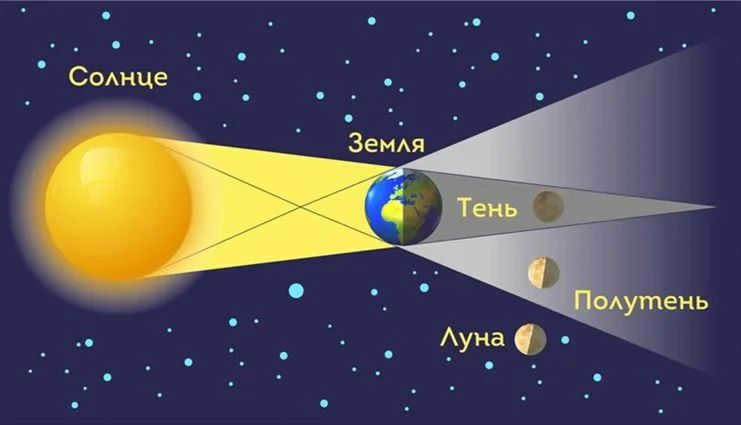
Source
What is saros
The Moon’s rotation around the Earth and the Sun’s rotation around the Earth occur in a cyclical pattern known as “saros”. This term was coined by E. Halley after his discovery of this recurring phenomenon.

In a single saros cycle, typically, there occur 43 solar eclipses:
There are 28 lunar eclipses:
On average, humanity is able to witness 4 eclipses every year. Frequently, lunar and solar eclipses happen simultaneously. If a solar eclipse took place during the new moon phase, there is a possibility of a lunar eclipse occurring in 2 weeks (during the full moon phase).
Time and the Calendar
The existence of every contemporary individual is somewhat intertwined with time and dictated by the perpetual cycle of day and night, as well as the changing seasons of summer, autumn, winter, and spring. The practice of timekeeping dates back to ancient times, and as humanity has progressed, so too have the methods of measurement.
In today’s society, individuals base their lives on solar time. The solar day, consisting of 24 hours, serves as the primary unit of measurement. This duration represents the time it takes for the Earth to complete one full rotation on its axis, with the Sun serving as the reference point. As we learn in geography, our planet not only rotates on its axis but also orbits the Sun. During the Earth’s revolution, it covers a specific distance along its orbital path, resulting in its displacement relative to the Sun. It’s important to note that the Earth’s orbit is not perfectly circular, but rather elliptical. Consequently, the length of a solar day varies throughout the year, either decreasing or increasing. Despite this fluctuation, 24 hours remains the average value commonly used in daily life.
Astronomers cannot base their calculations on average values since the trajectory of a space rocket depends on various factors, such as its destination and the chosen route. To account for this, astronomers use the concept of “sidereal time.”
Sidereal time is calculated based on the positions of the fixed stars, rather than the Sun. A sidereal day lasts approximately 23 hours, 56 minutes, and 4.1 seconds.
The duration of the Earth’s orbit around the Sun can be classified into two types: the sidereal year and the tropical year.
The sidereal year, also known as the sideric year, is the time it takes for the Earth to complete one full revolution around the Sun in relation to the stars. It lasts for approximately 365 days, 6 hours, and 9 minutes. Throughout this period, the Earth experiences changes in seasons. However, the complete cycle of seasonal changes does not align perfectly with the Earth’s orbit around the Sun.
On the other hand, the tropical year refers to the time it takes for the seasons to change from one vernal equinox to the next. It lasts for about 365 days, 5 hours, and 51 minutes. The 20-minute difference between the tropical and sidereal year can be attributed to the precession of the Earth’s axis.


In order to facilitate calculations, it is customary to consider one year as exactly 365 days. The additional six and a few hours, accumulated once every four years, result in an extra day, which is why we have the concept of a leap year, and February 29 is added to the calendar.
The lunar calendar is based on the phases of the moon, and as a result, synodic months are utilized. Each lunar month comprises 29.5 days. To avoid confusion with fractional parts, one month is denoted as 29 days in one calendar and 30 days in another. A complete year consists of 12 months. The lunar calendar incorporates both simple and leap years.
On the other hand, the solar calendar is used to represent the tropical year and is determined by the seasons. A full year encompasses 365.2 days. Similar to the lunar calendar, the solar calendar also includes both simple and leap years.
Ancient civilizations developed their initial calendars by observing the ever-changing phases of the moon. They noticed that the moon took on different shapes each day as it illuminated the night sky. These shapes repeated with a certain regularity. Based on these observations, they began measuring time between new moons and called this time interval the synodic month. The creation of the lunar calendar marked the beginning of the first chronology.
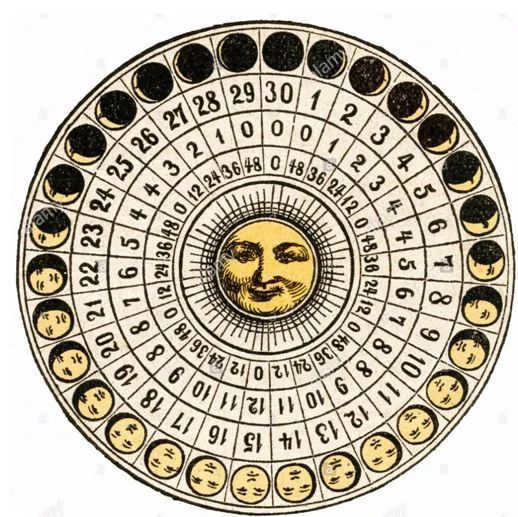

The original lunar calendar is no longer sufficient for humanity’s needs as agriculture developed. What was necessary was a calendar that could accurately track the changing of seasons. This led to the creation of the tropical calendar, which also incorporated the use of months. This new calendar greatly improved the organization of farming and herding. Both the lunar and tropical calendars are important in our lives, sharing similarities as well as distinct differences:
- Both calendars consist of 12 months (cycles);
- The duration of the cycles vary;
- In the solar calendar, the year always starts on the same date, while in the lunar calendar it constantly shifts due to the shorter lunar cycle;
- A day in the solar calendar always lasts for 24 hours, whereas in the lunar calendar this duration varies. However, during a specific day of the lunar cycle, the time remains constant.
With the help of the solar calendar, individuals can accurately predict when it will be warm or cold, morning or night. On the other hand, the lunar calendar is used to determine the optimal time for growing hair and nails, scheduling surgeries, planting crops, and more.
In the year 45 BC, the Julian calendar came into existence. It was named after the renowned Julius Caesar, who was in power during this period. Taking the solar calendar as a foundation, the chronology was based on the time it took for the Sun to pass through all the equinox points. This system was considered highly precise at the time. The year consisted of 365 days, and the concept of a leap year was introduced to add an extra day to the calendar. The Julian solar calendar was widely utilized by numerous countries for 1.5 thousand years.
In the late 17th century, Pope Gregory XIII proposed a new chronology system known as the Gregorian calendar. While the number of days in this calendar aligned with the Julian calendar, some adjustments were made regarding leap years. In the Gregorian calendar, years ending in zero that are not divisible by four are not considered leap years. For example, 2000 was a leap year, but 2100 will not be. Pope Gregory XIII’s main motivation for creating the Gregorian calendar was to ensure that Easter always falls on a Sunday, as opposed to the Julian calendar where it varied each year. The Gregorian calendar was officially implemented on February 24, 1582.
Currently, both calendars coexist side by side. The majority of countries follow the Gregorian calendar, while the Julian calendar is still used for calculating Christian holidays. Since 1917, Russia has adopted the Gregorian calendar, resulting in a shift of 14 days in the chronology. This is why the country celebrates New Year twice: on January 1st according to the Gregorian calendar, and on January 14th according to the old style Julian calendar.
The Moon orbits around the Earth, completing one revolution in approximately 29 days. However, its orbit is not a perfect circle, but rather an ellipse. The path it traces while orbiting the Earth is known as its orbit.
Due to the elliptical shape of the Moon’s orbit (as shown in the diagram), it comes closest to the Earth (known as Perigee) once every 29 days, and moves farthest away (known as Apogee) once during the same period.
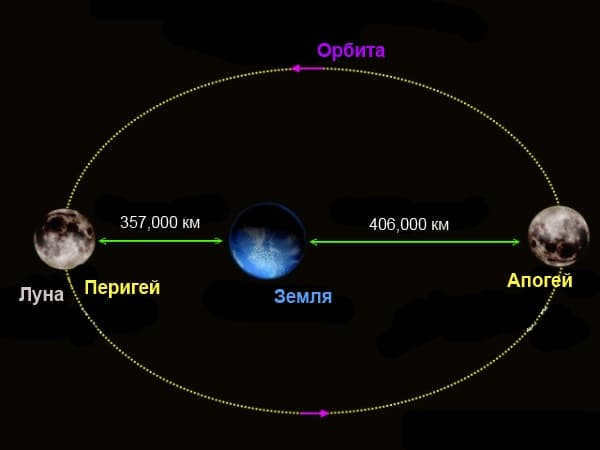
Here are some answers to intriguing inquiries that arise when contemplating the phenomenon of observing the Moon in the celestial realm.
What is the reason for consistently seeing only one side of the moon?
If we ponder over this, it appears rather peculiar. Consider this: if we place a soccer ball on the ground and proceed to orbit a small tennis ball around it, the tennis ball will change directions as it moves.
However, when it comes to the Moon, we always observe just one side. This is due to the fact that as the Moon revolves around the Earth, it simultaneously rotates on its own axis, completing one full revolution in the same time it takes to complete a revolution around the Earth. It’s truly miraculous. Scientists have put forth two theories to explain this phenomenon:
- the gravitational forces exerted by the Earth on the lunar crust;
- These occurrences have the potential to synchronize the moon’s rotation both on its axis and around the earth.
Is it true that the sun never illuminates the moon’s far side?
Is the side of the moon that faces away from the Earth never exposed to sunlight?
No, that is incorrect. During half of the lunar month (approximately 14 days), one portion of the moon is illuminated while the other portion remains in darkness. This situation then reverses. It is important to note that the temperature on the illuminated surface can reach up to 107 degrees Celsius, while the unilluminated surface can drop to -150 degrees Celsius.
How can I determine the lunar day number?
The lunar day number is not the same as the day of the month number because a lunar month consists of approximately 29 days, while the calendar month consists of 27 to 31 days. To determine the lunar day number, you can use the following methods:
- Moon today page – provides the lunar day number for today and tomorrow.
- Lunar Calendar – contains complete information for each day from 1 AD to 3000.

